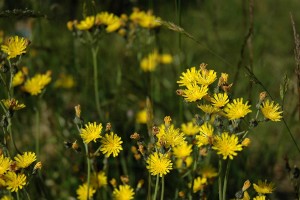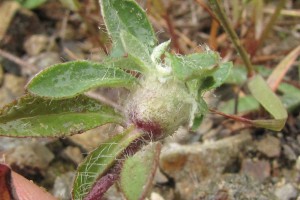Hieracium plume moth
History in New Zealand
The hieracium plume moth is native to Europe and it was first imported from Switzerland by Manaaki Whenua - Landcare Research, in association with the Hieracium Control Trust in 1996, with the first release made in 1999. Due to difficulties in rearing the moth, it has only been released at the one site so far and is not thought to have established. It is uncertain whether it will be possible to make any further attempts to release this agent.
How would I find/recognise it and what is its lifecycle?
The adult moths are generally dark brown and white in colour. Their hind wings are distinctive as they as divided into three plumes, hence the common name. The moths lay yellowish-white eggs singly on the hairs of the upper leaf surface during summer. After a few days, the eggs turn red and after about 2-3 weeks hatch into greyish/cream coloured caterpillars. The caterpillars spin loose webbing on the rosette crown and burrow into the centre of the plant to feed. They remain as tiny caterpillars over winter and put on a growth spurt the following spring. Towards the end of spring, they pupate for nearly 2 weeks. The bright yellow pupal cases are often webbed to the underside of the leaves and are made by scraping the leaf surface.

Image: hieracium plume moth caterpillar.
How does it damage hawkweeds?
The caterpillars damage hieracium plants by grazing on the central buds, the root-crowns, and leaves of rosettes and stolons. Heavily damaged plants grow less, produce fewer flowers, and may even die.
Will it attack other plants?
No, it is extremely unlikely that hieracium plume moths will attack plants other than mouse-ear hawkweed (Pilosella officinarum), king devil hawkweed (P. praealta), field hawkweed (P. caespitosa), tussock hawkweed (Heracium lepidulum), and orange hawkweed (P. aurantiaca).
How do I select a release site?
Read Guidelines for selecting release sites for biocontrol agents.
Key contact




